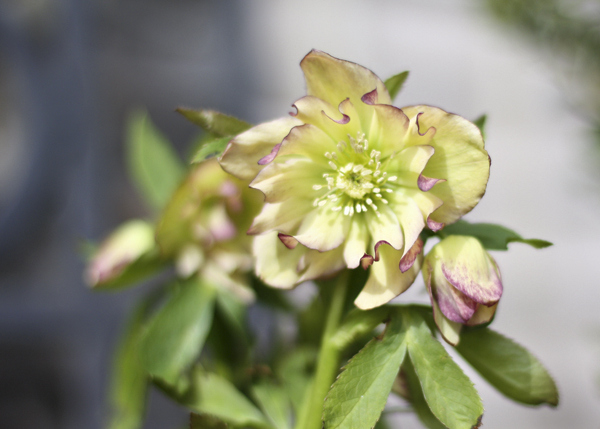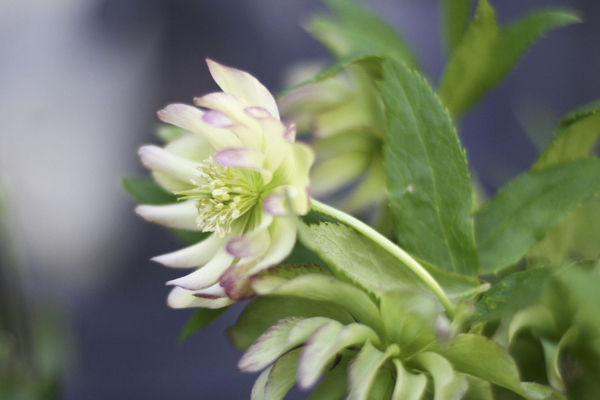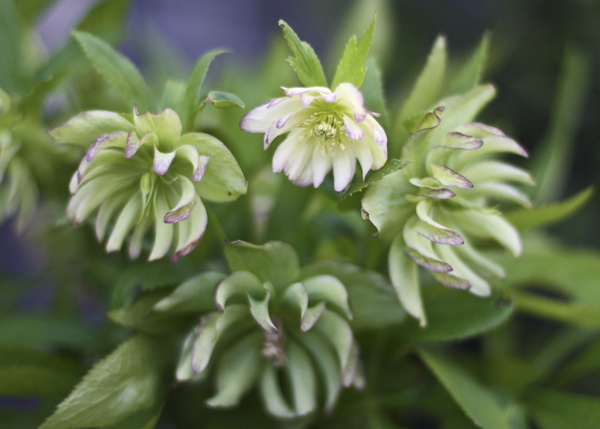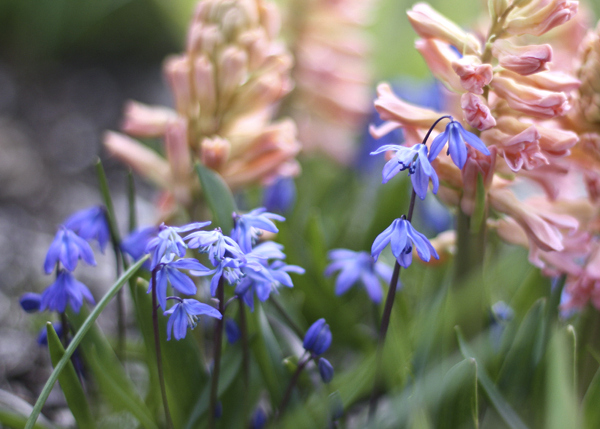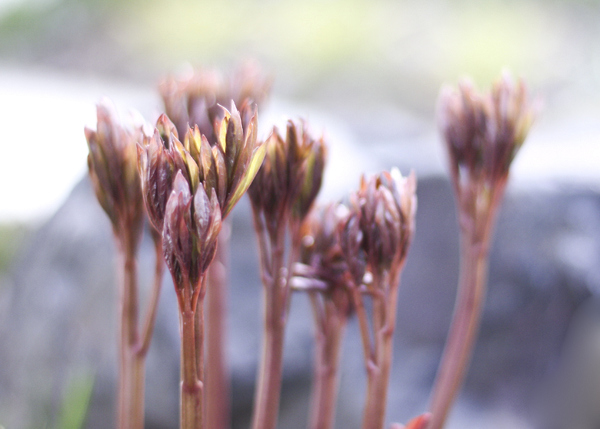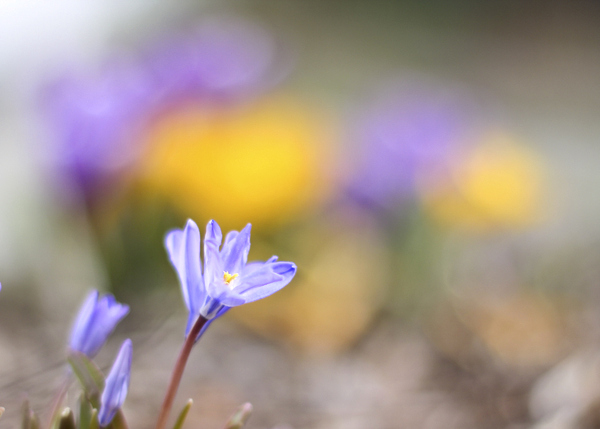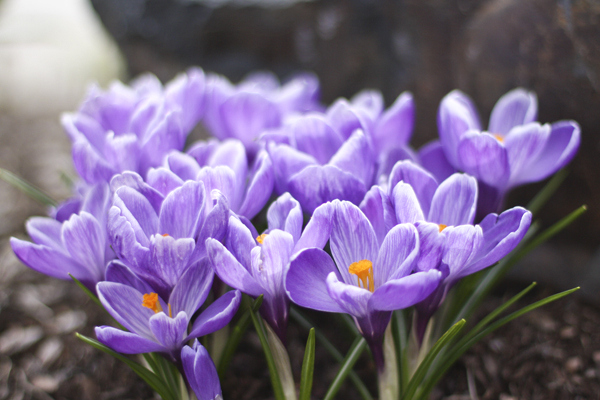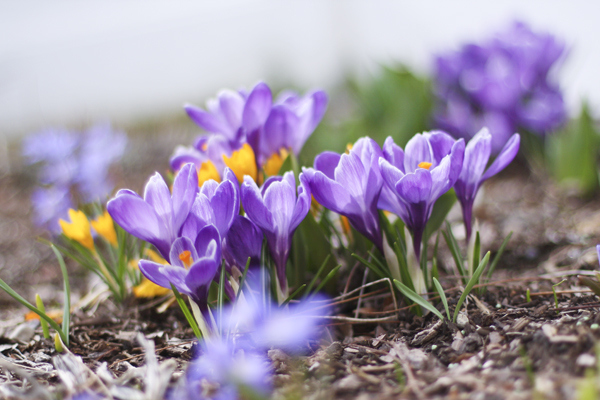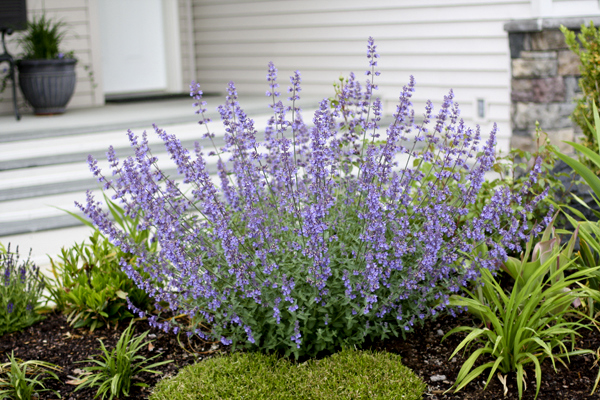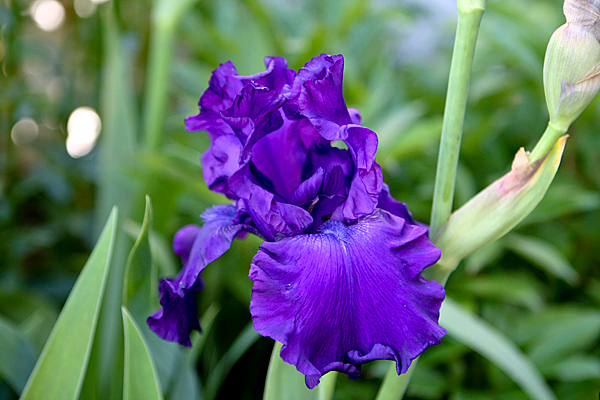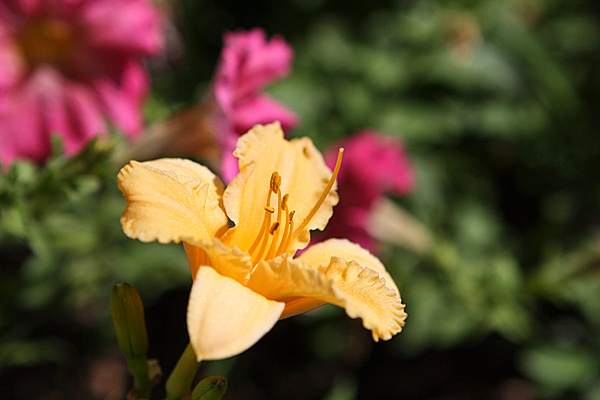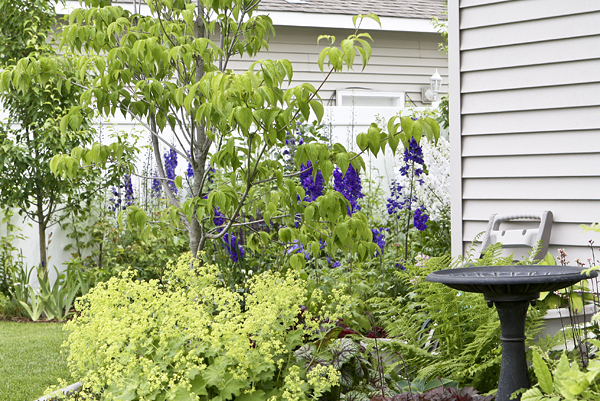
The spring bulbs are at their peak over at the Spokane LDS Temple. The landscaping director asked me to put together some ideas for which bulbs we should add this fall, so I went there last week to take pictures of what is going on now. The daffodils, grape hyacinths and flowering pear trees around the main entrance look spectacular this spring.
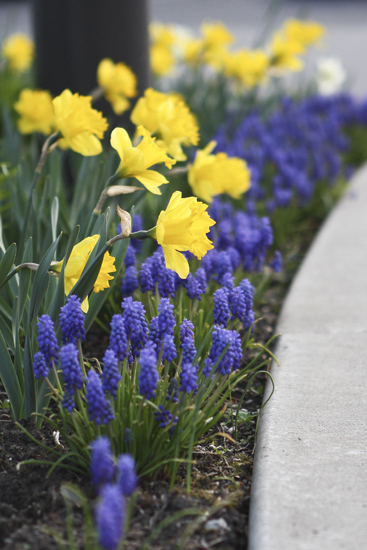
Each year the temple makes a large bulb order from C.J. Zonneveld & Zonen B.V. We already have hundreds of daffodils, tulips and hyacinths at the temple. I am hoping this fall that we'll add a lot of earlier spring color in the form of - you guessed it - small bulbs like crocuses.
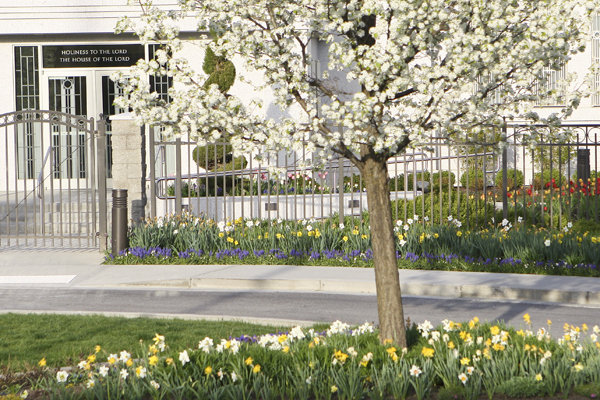
I am also going to suggest that we add plenty of Anemone blanda, or windflower. The great thing about this plant, along with its sweet blue or white daisy-like flowers, is its mound of lacy foliage that covers the bare ground at the base of spring bulbs and gives the planting a finished look. The leaves die back not long after it flowers in April and May, leaving room for perennials and annuals to fill out. It will be easy to slip the quarter-sized tubers into current plantings, and it's supposed to be deer-resistant.

We have to keep planting more daffodils at the temple, as they don't last many years for us there. The bulbs aren't very happy in heavy, clay soil that has annuals or perennials growing there in summer and therefore has to be watered during the bulbs' dormant period, when they'd prefer to be dry.
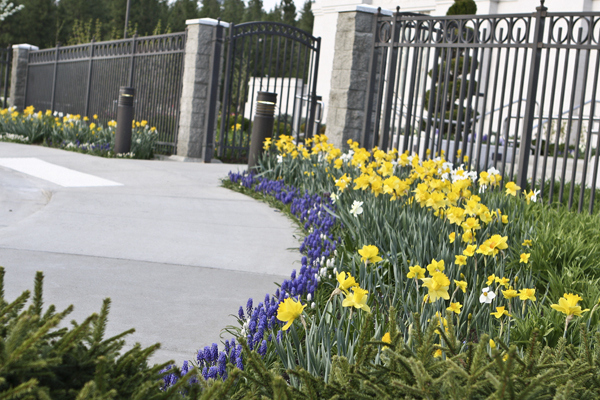
I've been studying the bulbs on the Zonneveld site to find interesting combinations. The combo of yellow, white and blue at the front gate (above) is working well. I have my eye on another spot for some peachy-pink 'Gipsy Queen' hyacinths mixed with peachy-pink and white daffodils like 'Precious'. Plus some blue Anemone blanda . . . it should be dreamy.

There are dozens of tulips to choose from at Zonneveld. They're organized into early, mid and late season bloomers. The most beautiful tulips - doubles (like the ones above), parrots, fringed and lily-flowering - have to be replanted every year or two.
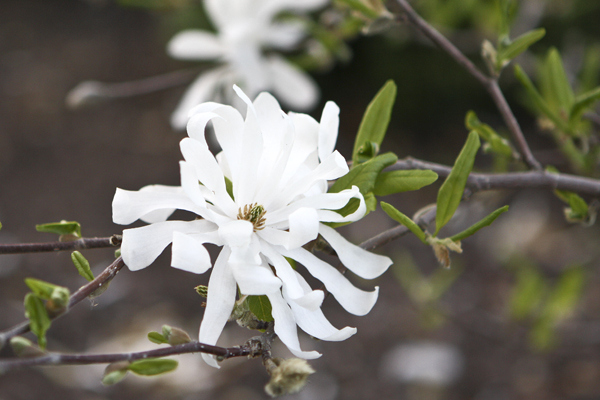
It is a lot of work to plant the fancy tulips each fall, but they are absolutely gorgeous in bloom. They are especially showy when two or three types in coordinating colors are blooming together, so I'm thinking in terms of combos instead of single types. The photo above shows a bloom from one of the Star magnolias on the east side of the temple. Perhpas we can do a combo of pinks and purples in the bulb bed nearby, including pink 'Foxtrot', 'Purple Prince' and 'Blue Diamond' tulips. Plus some anemones, of course.

We have had success with Impression and Darwin-type tulips coming back for several years. Above are 'Red Impression tulips, which started out this soft color but quickly changed to pure red. Also shown are the reddish shoots of peonies.
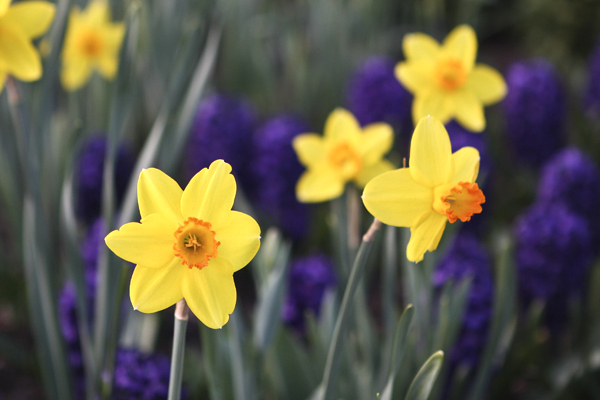
I hope we can continue to create great color combos like the gold and orange daffodils with deep violet hyacinths above. I'd like to add double 'Orange Princess' tulips to this bed at the southern entrance to the temple. The colors will really pop.

While looking at the photo above, I finally understand why gardeners get so excited about Iris pallida 'Variegata.' The flowers (which show up in May or June) are not as showy as other iris, but the leaves are magical in the evening light. It's good to consider nearby perennial foliage as part of bulb displays. The daffodils here blend well with the striped iris leaves.

Do you have any suggestions for favorite bulbs or bulb combinations? It's always nice to hear what works in other landscapes. Planning bulb displays is such fun, and I'm grateful for the opportunity to present ideas for the director to consider.

